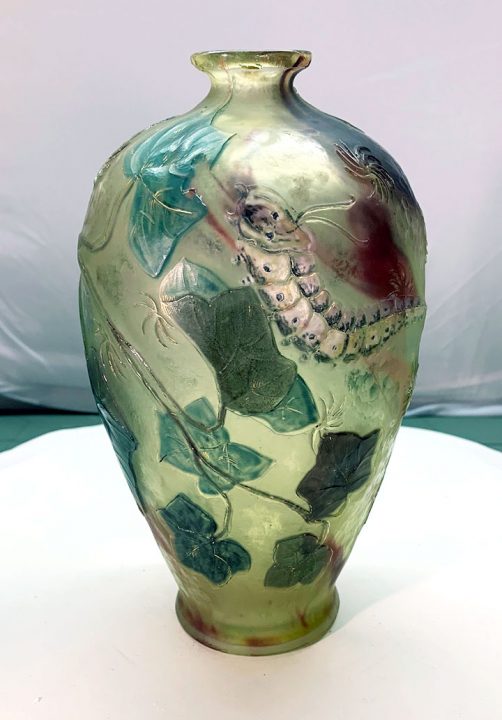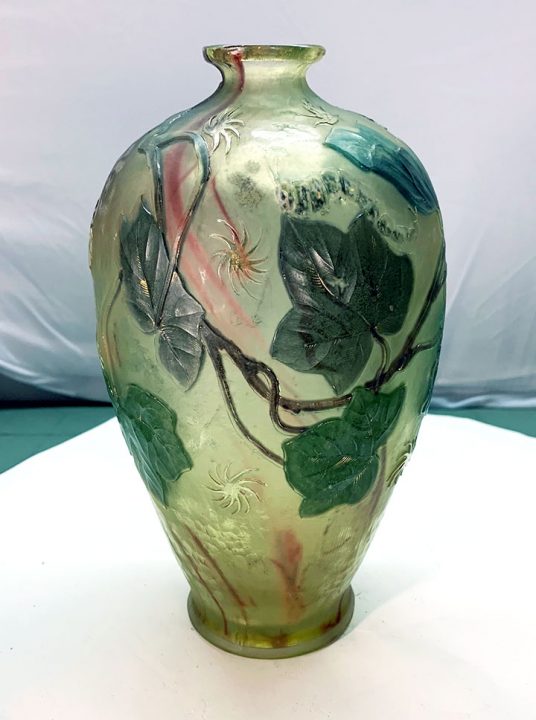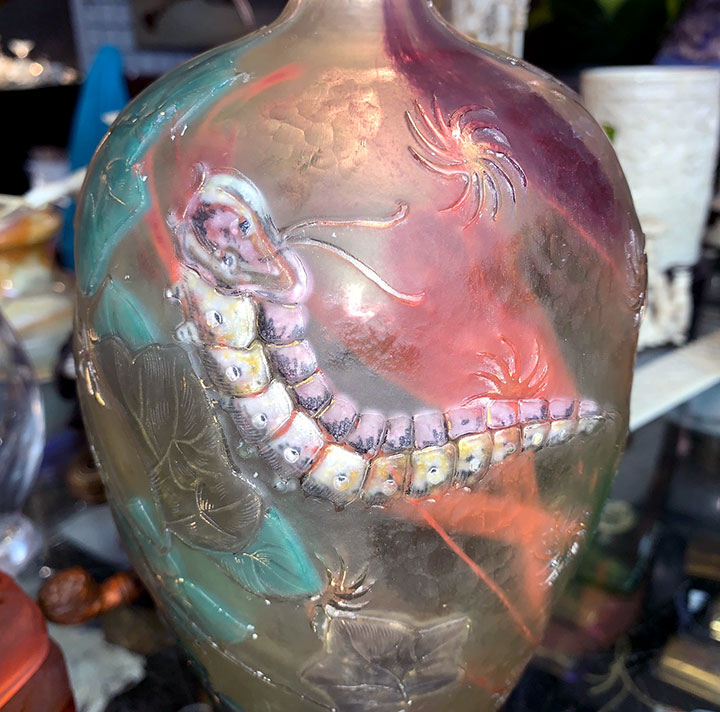Burgun, Schverer & Cie (B&S) started business in the Alsace-Lorraine region of France, along the German border, in 1711. Germany annexed the area after defeating the French in the Franco-Prussian War of 1870, but it was returned to France in 1919 after Germany’s defeat in WWI. So technically B&S glass made in the 1890s is German, but that’s only a technicality. Everyone regards it as some of the best French Art Nouveau cameo glass ever made.

There is no rarer or more beautiful example of B&S than the example pictured above with an internal caterpillar. Until I saw this example, I had no idea such a thing existed. It just takes my breath away. The subject, the workmanship, the color, the extensive detail is fabulous. It’s amazing!
The best examples were internally decorated, accomplished through a complicated, difficult process. The process started with hand-blowing the glass to form the vase. After cooling, the floral decoration was hand-painted on the outside surface with glass enamel paint. Swirls were sometimes added. The vase was then reheated and covered with a layer of clear glass. This important step left the decoration inside the layers, hence the term internally decorated. After cooling, the vase was acid-etched to form the icicle border rim and the outlines of the flowers. Then it was time for hand-engraving, a technique called wheel or intaglio-carving, which increased the realism of the flowers. Splashes of martelé texture were also wheel-carved into the background. Finally, the gilded details were hand-painted. These included the veining in the leaves and stems and the gilded rim. The final step was to fire the vase to convert the painted gilding into shiny gold.

Many laborious steps were necessary to finish an internally decorated vase. My best guess is that it took two weeks to produce a single vase from start to finish.

B&S isn’t as well known as Gallé or Daum, except among the cognoscenti. I assume the scarcity of their work is largely responsible for that. Most good vases are priced in the $5,000 – $25,000 price range, when available, which isn’t often. The caterpillar vase sold well above that range, as you can imagine.

Fantastic piece. Atmospheric and ethereal with a most painterly effect. You are most fortunate to be gazing upon this piece in person. Certainly the “in person” effect is double what the photographs portray.